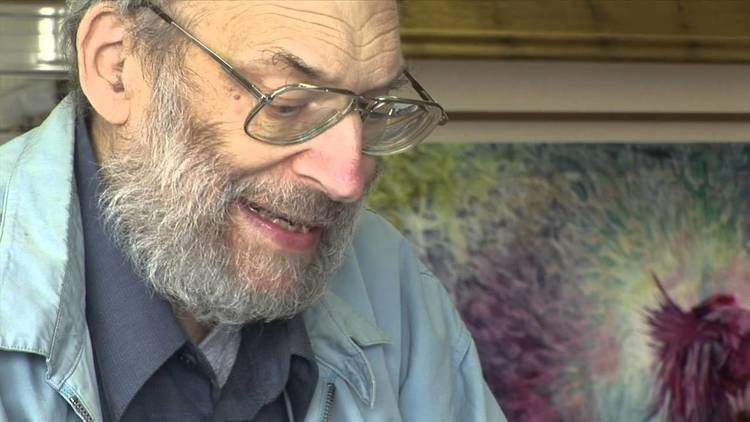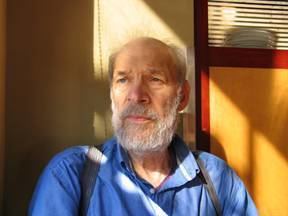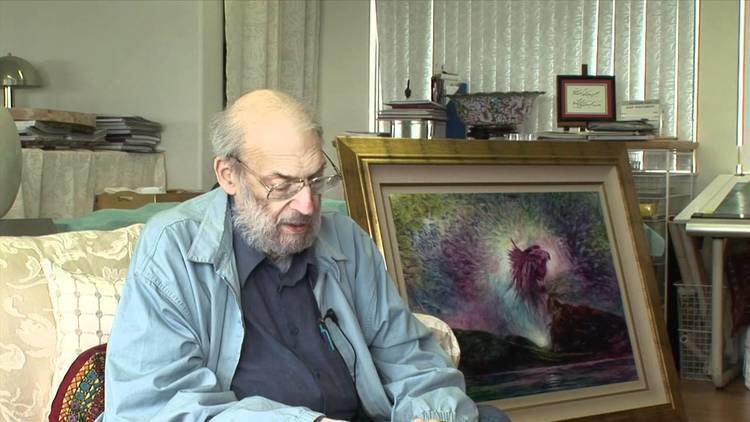Name Albert Boime | Role Author | |
 | ||
Awards Guggenheim Fellowship for Humanities, US & Canada Books The Birth of Abstract Romantic, Art and the French commune, Art in an Age of Counterr, Art in an Age of Revolutio, Art in an Age of Civil Struggle | ||
Albert boime 1
Albert Boime (March 17, 1933 – October 18, 2008) was a scholar and author on art history who was a professor of art history at the University of California, Los Angeles for three decades, until his death.
Contents
- Albert boime 1
- Albert Boime comparing Michael Angelos Creation with Kamran Khavaranis Creation
- Early life
- Writings
- The Starry Night painting
- Articles about Contemporary American Artists
- Death
- References

Albert Boime comparing Michael Angelo's "Creation" with Kamran Khavarani's "Creation"
Early life

Albert Isaac Boime was born on March 17, 1933 in St. Louis, Missouri. He earned a bachelor's degree in art history from University of California, Los Angeles in 1961 after completing service in the United States Army. He followed up in the field with a master's and a doctorate from Columbia University in 1963 and 1968 respectively. He was a professor at the State University of New York at Stony Brook from 1968 until 1972, when he left to teach at the Binghamton University, remaining there until 1978. He joined the faculty of UCLA in 1979.
Writings

Boime wrote some 20 books of art history, focusing not only on style and form, but using a Marxist and psychoanalytic analysis of the social and political contexts of art, examining how artworks are representations of the class, economic, power and social structures and racial attitudes that exist at their creation.

His first book, The Academy and French Painting in the Nineteenth Century, published in 1971 by Phaidon Press, examined the unintended role of the conservative Académie des Beaux-Arts in the development of 19th-century painters. In 1974, art critic and commentator Hilton Kramer of The New York Times called the book "the indispensable text" for a reconsideration of the merits of the Salon painters, as the book demonstrated the web of connections in the cultural and institutions of the time that affected artistic tastes and aspirations of that time.
His book series, The Social History of Modern Art, analyzed French art from the mid-18th century to the end of the 19th century, making connections between the art and subject matter to historical events at the time, such as the French Revolution and the rule of Napoleon Bonaparte. The four-volume, 3,000-page series, published over a two-decade period by the University of Chicago Press, includes Art in an Age of Revolution, 1750–1800 (1987); Art in an Age of Bonapartism, 1800–1815 (1990); Art in an Age of Counterrevolution, 1815–1848 (2004); and Art in an Age of Civil Struggle, 1848–1871 (2007).
The Starry Night painting
An analysis of Vincent van Gogh's The Starry Night by Boime convinced him that the images in the painting's night sky were not a fanciful artwork, but was the result of Van Gogh's observations of the sky from the window of the asylum in Saint-Rémy-de-Provence at 4 a.m. on June 19, 1889, the day he wrote his brother that he had completed the painting. In a 1985 lecture to the American Astronomical Society, Boime compared the positions of the moon and Venus that night and showed that they corresponded to the positions of the celestial objects in the painting, noting that the scene "tallies with astronomical facts at the time the painting was executed."
Articles about Contemporary American Artists
In his article, Which Came First: The Cosmos Or The Chaos? written for "COSMOS & CHAOS: A Cultural Paradox" group exhibition, which included works by Ib Benoh, James Bohary, Eric Fischl, Lucian Freud, and Jerome Witkin, Boime examined the complex of psychological, social, and political issues that some artists face in today's society.
Death
A longtime resident of Los Angeles, Boime died at age 75 in his home there on October 18, 2008 of the bone marrow disorder myelofibrosis.
